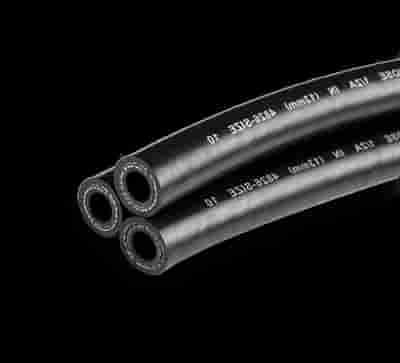transmission oil cooler hose 1 2
ធ្នូ . 19, 2024 00:57 Back to list
transmission oil cooler hose 1 2
Understanding Transmission Oil Cooler Hoses Importance, Function, and Maintenance
The transmission system in a vehicle plays a crucial role in ensuring that the engine's power is effectively transferred to the wheels. One of the vital components of this system is the transmission oil cooler, which helps maintain the optimal operating temperature of the transmission fluid. Integral to this cooling system are transmission oil cooler hoses, specifically designed to channel fluid between the transmission and the cooler. Understanding the importance, function, and maintenance of these hoses is essential for vehicle owners who wish to enhance the longevity and performance of their vehicles.
Importance of Transmission Oil Cooler Hoses
Transmission oil cooler hoses are crucial for the cooling process of transmission fluid. As the transmission fluid circulates through the system, it absorbs heat generated during operation. If this fluid becomes too hot, it can lead to diminished performance, increased wear and tear on transmission components, and even transmission failure. The oil cooler, generally located at the front of the vehicle near the radiator, utilizes air flow to lower fluid temperature. The hoses facilitate the transportation of this fluid to and from the cooler, making them indispensable in keeping the transmission operational within its designed temperature range.
Moreover, the quality of transmission oil cooler hoses directly affects the transmission’s efficiency. High-quality, durable hoses are less likely to leak or burst under pressure, reducing the risk of transmission failure and costly repairs. It’s essential to ensure that the hoses can withstand the high temperatures and pressures associated with transmission fluids.
How Transmission Oil Cooler Hoses Function
The operation of transmission oil cooler hoses relies on a basic understanding of fluid dynamics. When the transmission fluid heats up, it is pumped through these hoses to the cooler. In the cooler, ambient air is drawn through a series of fins or tubes, which helps dissipate the heat from the fluid. After cooling, the transmission fluid returns to the transmission where it can perform its role effectively, enabling smoother shifts and ensuring that the components are lubricated properly.
Typically made from reinforced rubber or synthetic materials, these hoses must be flexible yet strong enough to endure constant pressure and extreme thermal conditions. Over time, however, factors such as age, heat exposure, and chemical reactions with the fluid can cause degradation. This makes regular inspection and maintenance of these hoses crucial.
Maintenance of Transmission Oil Cooler Hoses
transmission oil cooler hose 1 2

Maintaining the integrity of transmission oil cooler hoses is essential to prevent leaks and system failures
. Here are several tips for vehicle owners to ensure their hoses remain in optimal condition1. Regular Inspections Periodically inspect the hoses for signs of wear, such as cracks, bulges, or leaks. These visual checks should be part of routine vehicle maintenance.
2. Check Connections Ensure that the hose connections are secure. Loose connections can lead to leaks, which can severely affect transmission performance.
3. Fluid Condition Monitor the condition of your transmission fluid. If it appears dirty or burnt, it may indicate that the cooling system is not functioning correctly or that the hoses may be blocked or damaged.
4. Replace When Necessary If any signs of wear or damage are observed, it’s vital to replace the hoses immediately. Using OEM (Original Equipment Manufacturer) parts ensures compatibility and reliability.
5. Professional Servicing Consider professional inspection and replacement during regular servicing. Mechanics can detect issues that might not be visible to the untrained eye.
Conclusion
Transmission oil cooler hoses may seem like a small component in a vehicle’s complex transmission system, but their role is vital for ensuring optimal performance and longevity. By understanding their importance, function, and maintenance needs, vehicle owners can take proactive steps to enhance the reliability of their transmission systems. Regular inspections and timely replacements can prevent costly repairs and ensure that the vehicle runs smoothly, making it essential for anyone invested in the care and maintenance of their automobile.
Latest news
-
Air Conditioning Charging Hose: Durable AC Recharge Kits
NewsAug.22,2025
-
Premium 4890 AC Hose | Durable & Perfect Fit Replacement
NewsAug.21,2025
-
High-Quality AC Hose: Compressor to Evaporator for Car
NewsAug.19,2025
-
Glass Storage Jar with Acacia Vacuum Vented Cover - HEBEI KEMO|Thermal Resistance, Food-Grade Safety, Eco-Friendly
NewsAug.18,2025
-
Glass Storage Jar with Acacia Lid - Hebei Kemao | Heat-Resistant, Eco-Friendly
NewsAug.18,2025
-
Glass Storage Jar with Acacia Vacuum Vented Cover - HEBEI KEMO|Thermal Resistance,Eco-Friendly Storage
NewsAug.18,2025
